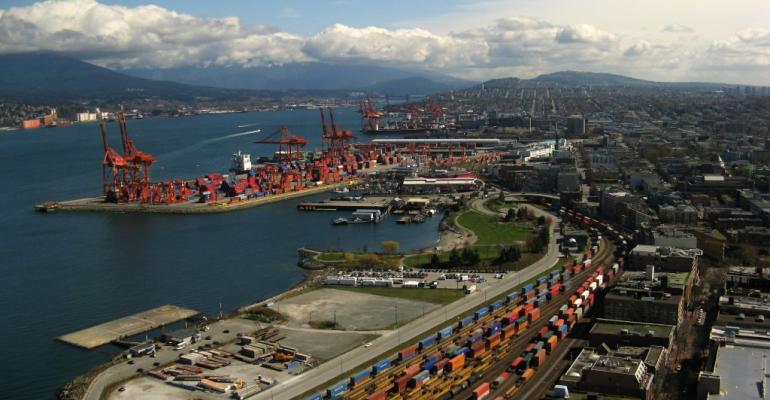The U.S. industrial markets have been chugging along with record-low vacancies, and the outlook appeared smooth for 2015—until a labor dispute slowed to a crawl work at 30 ports along the West Coast this past week.
Millions of dollars’ worth of products and materials sat idle in container ship cargo holds as the International Longshore and Warehouse Union held a strike at the ports. The union is now at the negotiating table with the Pacific Maritime Association, which represents the ports. The White House sent out U.S. Labor Secretary Thomas Perez to try to broker a deal.
There’s no question that the U.S. economy will suffer due to the shutdown. According to the port logistics group at commercial real estate services firm CBRE, previous strikes at West Coast ports have cost up to $1 billion per day. But this strike, especially considering it includes the massive Los Angeles port system, could cost the economy twice that amount. The ports are only running at about 55 percent capacity, and the wait for ship unloading is now up to two months.
Kurt Strasmann, senior managing director with the group, says many industries now face slowdowns in getting products through. Food from the agricultural shippers is rotting on the ships, the footwear industry depends on Asian imports and Japan has slowed production because it can’t get parts through, to list some examples. Apparel retailers worry their seasonal items won’t arrive on time, Strasmann says.
“You can’t run a business model when you have such volatility,” he notes. “With the billions of dollars lost per day, who pays for that in the end? The consumer.”
Strasmann says the strike could also have a small impact on the local industrial market, as companies, fed up with a number of West Coast strike stoppages, diversify some of their shipping to the East Coast markets. However, long-term, there shouldn’t be much pain felt by building owners.
“Southern California is the most sought-after industrial market for a reason, as there [are] barriers to entry with low vacancy and not much infill land for new buildings,” Strasmann says. “With the amount of population you can reach in these markets, it’s not surprising that Los Angeles and the surrounding port markets make up most of the top five industrial regions when it comes to low vacancy.”
Terry Reitz, executive managing director with real estate services firm Newmark Grubb Knight Frank, agrees that though there will be some stumbles in the short term as the strike ties up product distribution, there won’t be long-term pain for the industrial property sector. He says the current slowdown, the memory of the 10-day lock-out in 2002 and the 2012 clerical workers’ strike are causing cargo owners to consider alternative shipping patterns, including more East Coast routes through the Suez and more shipments through the Panama Canal.
“Truckers are trapped at the gates for hours waiting for loads, and the fewer loads a trucker can haul, the less money he makes. Some trucking firms are actually turning down business in the east end of the Inland Empire because they are losing money on those loads. Other trucking firms are raising their rates to compensate for the long haul, also cutting into the cargo owner’s bottom line.” Reitz says. “In the longer term, if labor actions continue causing more freight diversions, it could temper industrial real estate gains in the Los Angeles region. But I wouldn’t short Los Angeles real estate yet.”

